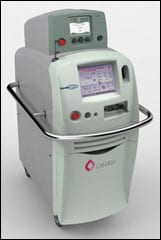 |
You need to adapt to changing times, and when the national economy rebounds you can’t assume happy days are here again.
Losses in the stock market, increases in unemployment, and times of economic uncertainty negatively impact the amount of discretionary income people spend on elective services. The owner of any elective services business (not just plastic surgeons and dermatologists) needs to proactively respond to these changes by focusing his efforts in the following four areas:
- Run your practice in an organized and disciplined manner;
- Get paid the proper amount for the services you are performing;
- Review the cost of employee benefits; and
- Alter the way you market your products and services.
RUNNING A TIGHT SHIP
When business is booming and patients are lined up out the door to see you, poor management of a practice can either be tolerated or overlooked. However, when business slows, you need to make certain that all business expenses incurred are necessary relative to your production.
In plastic surgery and dermatology (as in most medical practices), the two biggest expenses are rent and staff salaries. Right now, in the middle of the recession, is the time to make sure you are properly utilizing your office space. If you find that you have too much space or space that is not being used effectively, you might want to consider subletting a portion of it or finding an office that is less expensive.
All too often, physicians continue to employ a large office staff, even when business is slow, believing that when business and the economy recover they will need these employees. While that philosophy may be appropriate for a few weeks at a time, it can be devastating to a practice over an extended period—not to mention to your personal income.
Start your recession recovery plan by creating an organization chart listing all of your employees and their hierarchical authority, roles and responsibilities, functions, and relations within your practice. Review each of their job descriptions. Ask yourself whether or not other employees in the office could perform any of their jobs without impacting patient satisfaction. If the answer is “yes” then you might have too many employees.
If you think holding onto an unnecessary employee is the compassionate and “right thing,” think again. If holding onto that employee is stressing the finances of the practice and either risking the existence of the practice or limiting your ability to give raises to the other employees, you may be protecting one individual at the expense of the others.
GETTING GOOD PAY
One of the worst things you can do is to not get paid for the services that you actually perform. If you do not have a daily financial reconciliation system in place, now is the time to install one. Ask yourself and your staff the question, “If we forgot to put a service listed on our encounter form into the computer or put it in wrong, how would we know it?” If the answer is “I would see it” or “I check every bill,” good. If the answer is something like, “We would not balance out at the end of the day when we compare the totals on the encounter forms to the totals on the computer transaction report,” then you might have a problem.
In addition to asking the staff, hold back an encounter form and see if they notice. Also, try placing an extra $20 bill in the daily collections and see if they tell you that they could not balance out at the end of the day.
After you have ensured you are actually billing for the work that you do, make sure you are billing correctly for the services provided. Ask your staff for a procedure productivity report, and review each provider’s frequency of use of each CPT code.
More often than not, this review reveals glaring problems, including billing every encounter as a level 3 or not billing certain services at all. A side-by-side comparison of your use of each CPT code to your partners (and potentially to others in your specialty) can be very enlightening. Your local certified healthcare business consultant should be able to provide you with a side-by-side comparison to others in your area and specialty.
Ask your staff for an accounts receivable summary report, and hold a meeting with your billing department. If it cannot give you satisfactory answers as to what it is doing about all claims that are more than 60 days old (by insurance carrier), changes are needed. Good billing departments will be able to tell you what they have done to get you paid on each of the claims that are more than 60 days old.
Now is the time to ensure you have appropriate collection routines. At a minimum, each unpaid claim should be billed within 5 days of service, again after 30 days, and again after 60 days of service. Additionally, a telephone or Web-based inquiry should occur on claims that are more than 60 days old. Appeals processes with insurance carriers should be initiated on denied insurance claims; patient balances more than 90 days old should receive a telephone call; and claims more than 120 days old should be sent to collections.
THE COST OF EMPLOYEE BENEFITS
Of all the expenses in your practice—and depending upon the size of your practice—health insurance is probably one of the most expensive benefits that you provide. As health insurance costs continue to skyrocket, health savings accounts (HSAs) provide you with a great opportunity to reduce costs.
Assuming you and your employees are relatively young and healthy, consider switching to a high-deductible health insurance product. Back in 2004, President Bush introduced HSAs. Only individuals or families covered under a high-deductible health insurance plan during the year are eligible to contribute to an HSA. For 2009, the minimum annual deductible to qualify as a high-deductible plan is $1,150 for individuals or $2,300 for families.
The following four tax breaks are available to you if you contribute to an HSA:
- Money contributed into an HSA is income tax-deductible. Either you contribute into an HSA on your own, or your employer contributes on your behalf.
- Money invested within the HSA is your money and grows tax-deferred. Unlike flexible spending accounts offered to you as part of your employee benefit package—in which you put aside a set amount of money to pay for your family’s health care costs with pre-tax dollars—there is no “use it or lose it” pitfall with HSAs.
- Money can be withdrawn tax-free from your HSA at any time to pay for your family’s health care expenses.
- Any money remaining in your HSA upon your reaching the age of 65 is available to subsidize your retirement.
Next, open up an HSA for the year. Don’t forget to deduct your HSA contributions on your tax return that year.
Assuming you and your family have a relatively healthy year, you will end up ahead of the game, since you get to keep all the money left over in your HSA at the end of the year.
What happens if you incur substantial health care costs during the year? You will probably deplete your HSA. However, once you spend the full amount of your annual deductible and applicable co-insurance, your insurance protects you against any further financial hardship.
BANG FOR YOUR BUCK
Are you ready for some more good news about HSAs? When these tax-advantaged health care savings accounts were first introduced in 2004, the amount you could contribute into an HSA each year was a function of your annual deductible.
A few years ago, the rules were changed to make HSAs more attractive. For families, as long as your annual deductible is at least $2,300 (in 2009), you can contribute up to $5,950 into your HSA. Single individuals with a health insurance deductible of at least $1,100 in 2009 are eligible to deposit $3,000 into an HSA. Additionally, anyone age 50 or older can contribute an extra $1,000 into an HSA this year.
What this new rule means is that you can put away almost triple your annual deductible. Even if you tap into your HSA to pay 100% of your deductible and applicable co-insurance, you still have money left over, growing tax-deferred, to pay for future health care costs or to eventually to help fund your retirement.
Why not let your health insurance do its job and protect you and your family against the catastrophe? Then, couple this less expensive insurance with pre-tax contributions into an HSA, and you have discovered one strategy to minimize the after-tax cost of your family’s health care costs in today’s market.
CHANGE YOUR MARKETING EFFORTS
When money is tight, patients have a choice of foregoing elective procedures or seeking a less expensive alternative. Practices that offer the less expensive alternative often capture the patient and are able to then sell additional or more extensive services.
Are your current marketing efforts designed to offer the expensive service patients are hesitant to spend the money on, or are they designed to capture the patient in the first place so that you can then explain and offer additional services?
Rather than stressing financing options (at a time when consumers are being bombarded by the media on the need to control consumer debt), focus on the fact that you offer some services that can improve the patient’s appearance at a reasonable cost—such as injectables and laser treatments. Once the patient is in the door, you then offer him your additional services. In this way, you can be their surgeon for larger procedures in the future.
If you are not already offering free seminars regarding the products and services you offer, now may be the time. When demand for your services is high, you want to be able to bill a new patient visit or consult fee when you explain your services. However, if the demand has dropped and patients are not coming through your door, getting them in the door is more important than being able to bill for a first visit.
If a drop-in business is providing you with some free time, use that time wisely. New patients are not going to find you sitting behind your desk reading a medical journal. Get out into the community and give lectures, submit articles to local newspapers, meet potential referral sources, and offer screening services.
|
See also “Should You Buy or Lease Your Office Space?” by Lawrence B. Keller, CFP, and Michael J. Wiley, CHBC, in the March 2009 issue of PSP. |
 |
However, do not expect every marketing and networking effort to generate a stream of business immediately. Marketing and networking is about volume. If you receive two new referral sources for every 10 marketing or networking events that you attend, the effort is worthwhile.
The bottom line is you need to adapt to changing times. Be sensitive to not only the clinical needs of your patients but also their financial situations. Obtaining patients who consume few services now with the potential of additional services later is better than not obtaining the patient at all.
Michael J. Wiley, CHBC, is the president of Healthcare Management & Consulting Services Inc, of Bay Shore, NY. He has more than 25 years of experience as a health care management consultant, with experience in advising solo practice start-ups to large multispecialty medical groups. He can be reached at (631) 665-0439 or .
Lawrence B. Keller, CFP, is the founder of Physician Financial Services, a New York-based firm specializing in income protection and wealth-accumulation strategies for physicians. He can be reached at (516) 677-6211 or .





